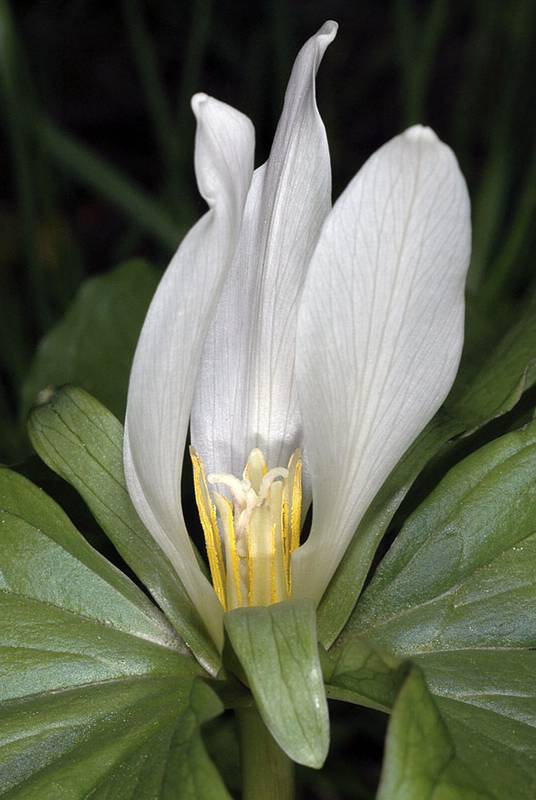Trillium albidum
Trillium parviflorum
giant trillium, sessile trillium
Leaves 3, whorled, extending outwards past flower, sessile, 7-20 cm long and 12-15 cm wide, generally ovate, apex rounded to obtuse, green, sometimes with brown or purple tinged spots.
Leaves sessile in a whorl of 3, the blade green with obscure mottling, ovate to broadly ovate, 6.5-16 cm. long and 5-8 cm. wide, not glossy, the tip obtuse.
Flowers 1, sessile;
sepals 3, free, persistent, green, spreading, 3-6.5 cm, lanceolate;
petals 3, erect to ascending, free, withering, white to slightly pale pinkish, base sometimes purple;
stamens 6, 15-25 mm, tissue between anther sacs greenish;
ovary greenish to purplish, 3-chambered;
styles 3.
Flowers solitary and terminal on the scape;
sepals 3, green, spreading, lanceolate, 16-25 mm. long and 4-8 mm. wide, entire;
petals erect, concealing the stamens and ovary, white, linear to linear-lanceolate, 2.2 cm. long and 0.4-1 cm. wide, entire, the tip obtuse;
stamens 6, erect, 10-15 mm. long, the filaments white or purplish-tinged;
ovary superior, 3-celled;
stigmas 3, erect, green, the outer surface purple.
Berry-like capsule, green to purplish green, pulpy and juicy; seeds, many, ovoid.
Capsule sub-globose, maroon, 4-8 mm. long.



